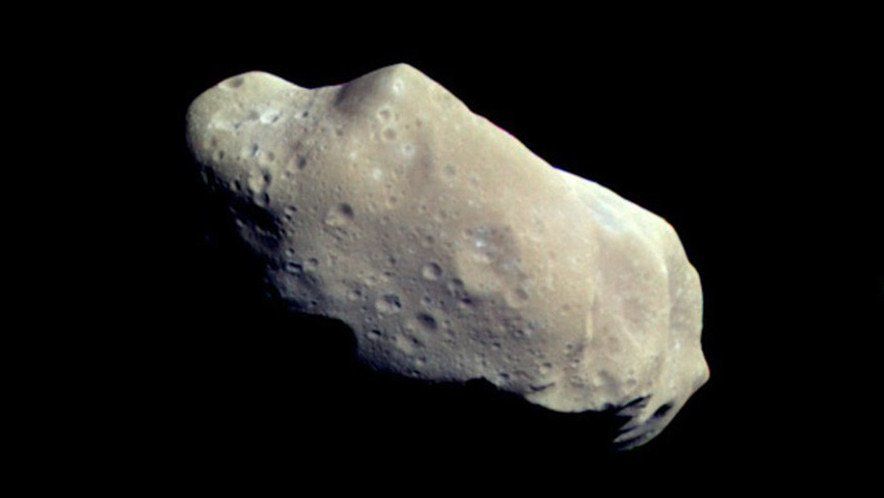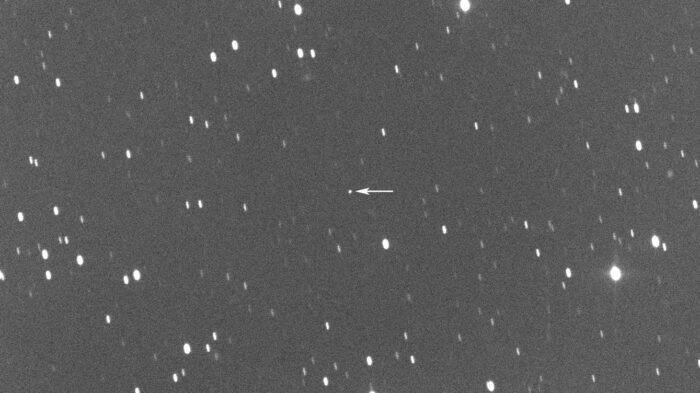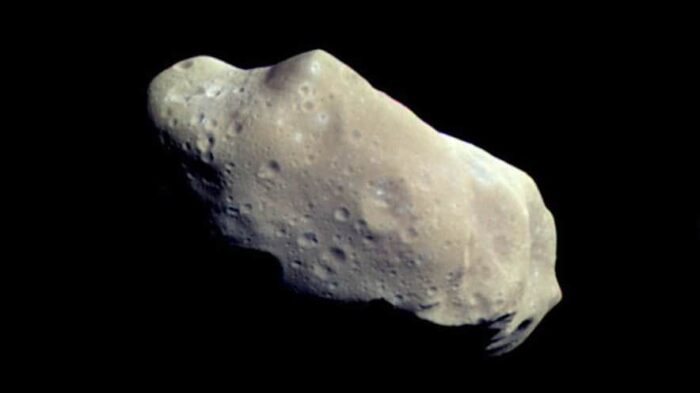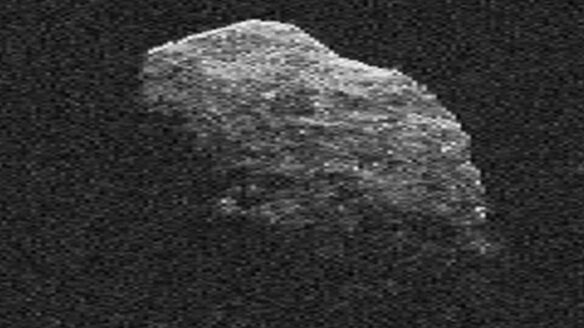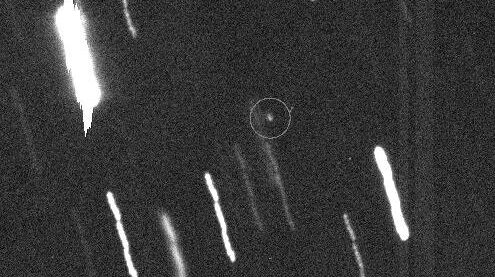Asteroid 99942 Apophis is more than 1,000 feet in size, which is equal to three football fields. It is expected to pass by at a distance of 31,300 kilometers (19,449 Mi) from Earth’s surface on 13 April 2029. For an asteroid of this size it is unusual to pass so close to our planet. It will also approach earth on March 5th, 2021
Where is Asteroid Apophis now?
3D Web App
Apophis is currently --,--- from us, getting --,--- --,--- us every second, at --,--- (--,---). The date for potential impact is 2029. Regularly the asteroid encounters earth in its orbit and this is not always a collision risk. The next encouter between Earth and this asteroid is Thu, Oct 12, 2020 when Apophis will pass by Earth at 31,881,145 km. (19,810,025 mi)
Since last night Apophis got --,--- --,---. Since you started looking at this page it has come --,--- --,---.
Will Asteroid Apophis hit the Earth?
Previous calculations (made in 2016) had all but ruled out the probability of an impact in 2068. The chance of an impact was seen in 2016 as vanishingly small, at just 1 in 150,000 odds of impact. This is a 99.99933% chance the asteroid would miss the Earth. The more recent observations, first discussed in October 2020 and updated again in early 2021, show a decreasing risk. Just imagine what would happen if Apophis hit the Earth… Apophis would cause widespread destruction up to several hundred kilometers from its impact site. The energy released would be equal to more than 1,000 megatons of TNT, or tens to hundreds of nuclear weapons.
Why did the probability of Apophis impact in 2029 go up before it went down to zero?
Soon after its discovery, more observations of Apophis refined the asteroid’s trajectory, and the range of trajectories still included Earth. More observations refined its path around the Sun and excluded Earth. This brings the probability of a 2029 impact down to zero.
In some instances, acceleration – a change in an object’s speed and direction through space – can help avoid a collision. This seems to be the case for the infamous asteroid 99942 Apophis. Its close approaches to Earth in this century have caused astronomers to watch this object carefully. Apophis is a large near-Earth asteroid, expected to pass close to Earth in 2029, 2036, and again in 2068. Impacts in 2029 and 2036 had already been ruled out. As of February 2021, the chances of impact during the 2068 flyby of Apophis are now 1 in 380,000. That’s a 99.99974% chance the asteroid will miss the Earth.
What we will see on 5, March 2021?
Due to its short orbital period around the sun of only 323.6 days (less than an Earth year), asteroid Apophis comes by this region of the solar system quite often. It will have a distant encounter with Earth in just a few months. On the night of March 5, 2021, the huge space rock will pass at 10,471,577 miles (16,852,369 km) from our planet, i.e. about 44 times the distance to the moon. Apophis is then expected to reach a visual magnitude of 15 to 16. This is too faint to be seen in small telescopes. It is however in the reach of 12-inch-diameter and larger telescopes, and possibly even smaller telescopes using sensitive cameras.
Astronomers will also study Apophis during the 2021 flyby with radar observations, using the Goldstone Observatory in California. These observations of Apophis should improve our knowledge of its shape and spin state. They will also help reduce uncertainties in the space rock’s orbit caused by Yarkovsky acceleration.
This 2021 flyby will be Apophis’ closest approach until the great encounter in 2029.
What does Apophis mean?
In Egyptian mythology, Apophis was a serpent and the enemy of Ra, the sun god. Every night Apophis god sought to bring eternal darkness to the world before being defeated by Ra at sunrise.
Play with the Apophis tracker on this page to get an idea for the location of the asteroid.
99942 Apophis was previously designated 2004 MN4. It weights 61,000,000,000 kg and it’s approach speed is a breathtaking 10,240 km/h (2.8 mi/s) . An impact would be similar to exploding the entire global nuclear arsenal of about 15,000 nuclear weapons, at once.
*This Interactive 3D Simulation is built on data provided by NASA JPL HORIZONS database for solar system objects and International Astronomical Union’s Minor Planet Center. Distances and speeds are estimates based on this data.
Photo Credit and other: NASA, ESO/S. Brunier, NASA/JHUAPL/SwRI, NASA/JPL-Caltech, JAXA, University of Tokyo & collaborators, UH/IA, Solar System Scope/INOVE CC BY 4.0, Wikipedia/Creative Commons Attribution-ShareAlike License, icons8.com, Péter Eke, NASA/Goddard/University of Arizona/Roman Tkachenko, Wikimedia Commons, Hayabusa 2 Arrival illustration by Akihiro Ikeshita (permission granted), oNline Web Fonts, Font Awesome, Galaxy vector created by stories – www.freepik.com

